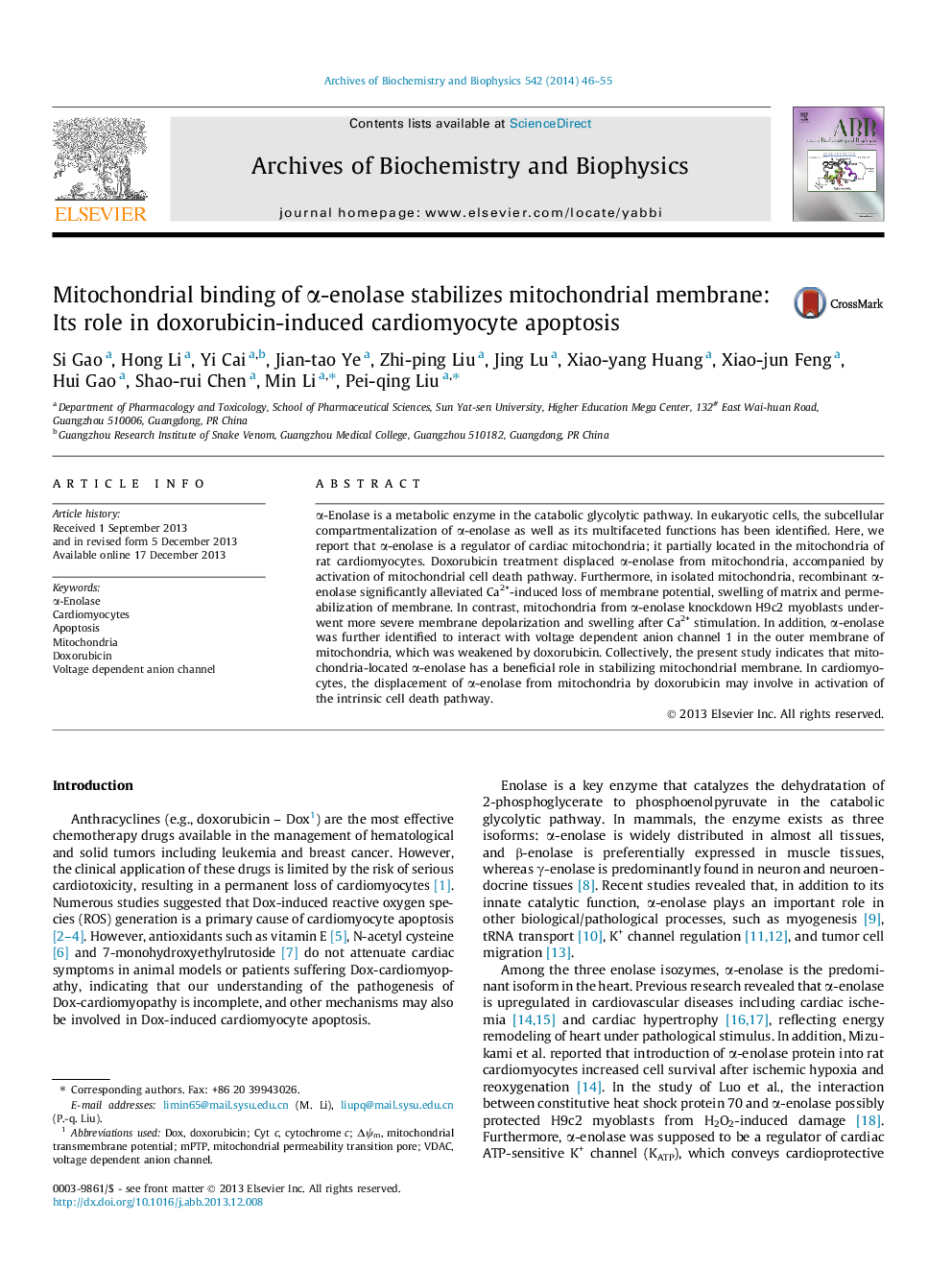| Article ID | Journal | Published Year | Pages | File Type |
|---|---|---|---|---|
| 1925275 | Archives of Biochemistry and Biophysics | 2014 | 10 Pages |
•The level of mitochondrial α-enolase decreased during cardiomyocyte apoptosis.•Recombinant α-enolase protein specifically stabilized mitochondrial membrane.•Loss of mitochondrial α-enolase aggravated Ca2+-induced mitochondrial damage.•α-Enolase interacted with voltage dependent anion channels in mitochondrial membrane.
α-Enolase is a metabolic enzyme in the catabolic glycolytic pathway. In eukaryotic cells, the subcellular compartmentalization of α-enolase as well as its multifaceted functions has been identified. Here, we report that α-enolase is a regulator of cardiac mitochondria; it partially located in the mitochondria of rat cardiomyocytes. Doxorubicin treatment displaced α-enolase from mitochondria, accompanied by activation of mitochondrial cell death pathway. Furthermore, in isolated mitochondria, recombinant α-enolase significantly alleviated Ca2+-induced loss of membrane potential, swelling of matrix and permeabilization of membrane. In contrast, mitochondria from α-enolase knockdown H9c2 myoblasts underwent more severe membrane depolarization and swelling after Ca2+ stimulation. In addition, α-enolase was further identified to interact with voltage dependent anion channel 1 in the outer membrane of mitochondria, which was weakened by doxorubicin. Collectively, the present study indicates that mitochondria-located α-enolase has a beneficial role in stabilizing mitochondrial membrane. In cardiomyocytes, the displacement of α-enolase from mitochondria by doxorubicin may involve in activation of the intrinsic cell death pathway.
